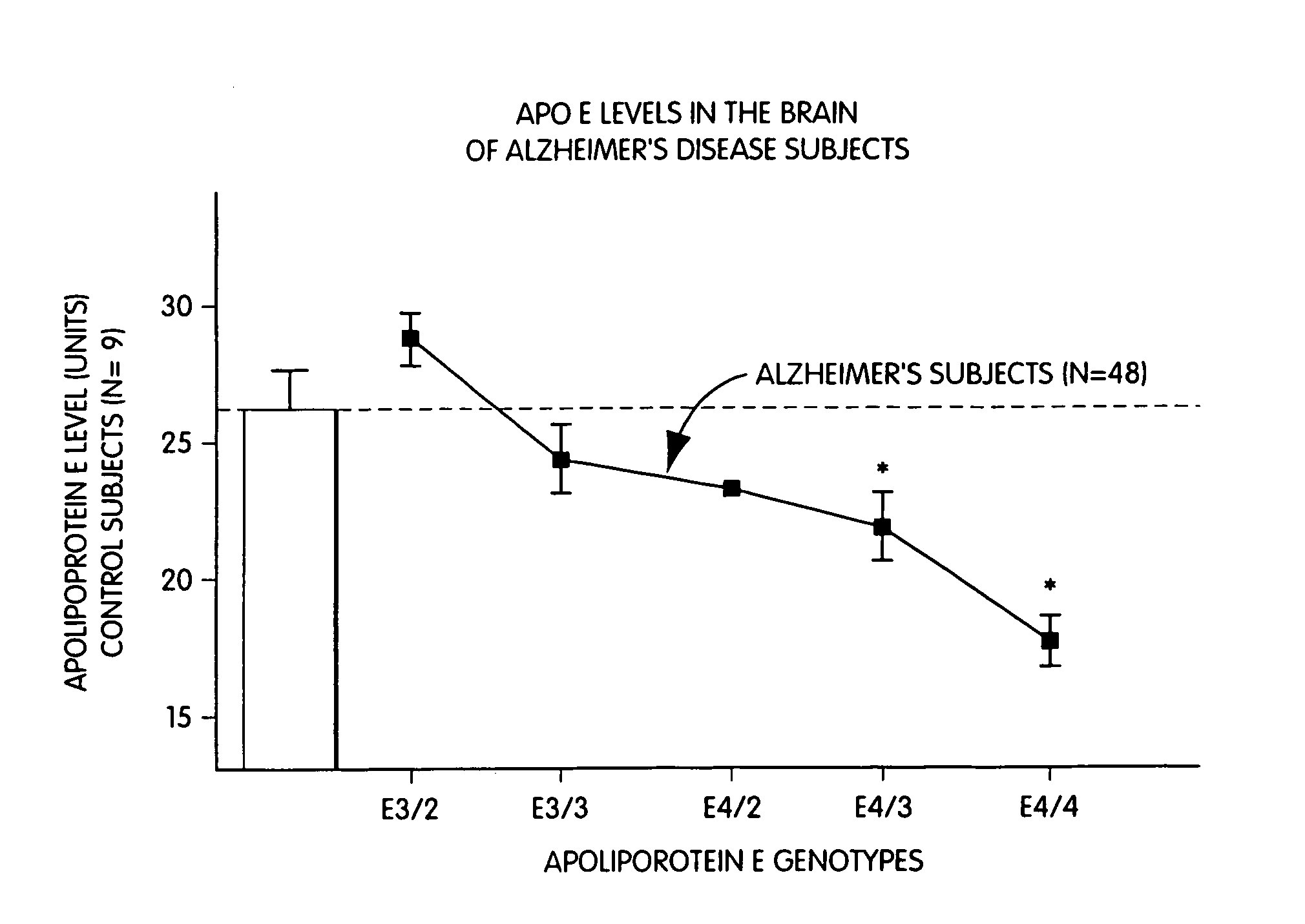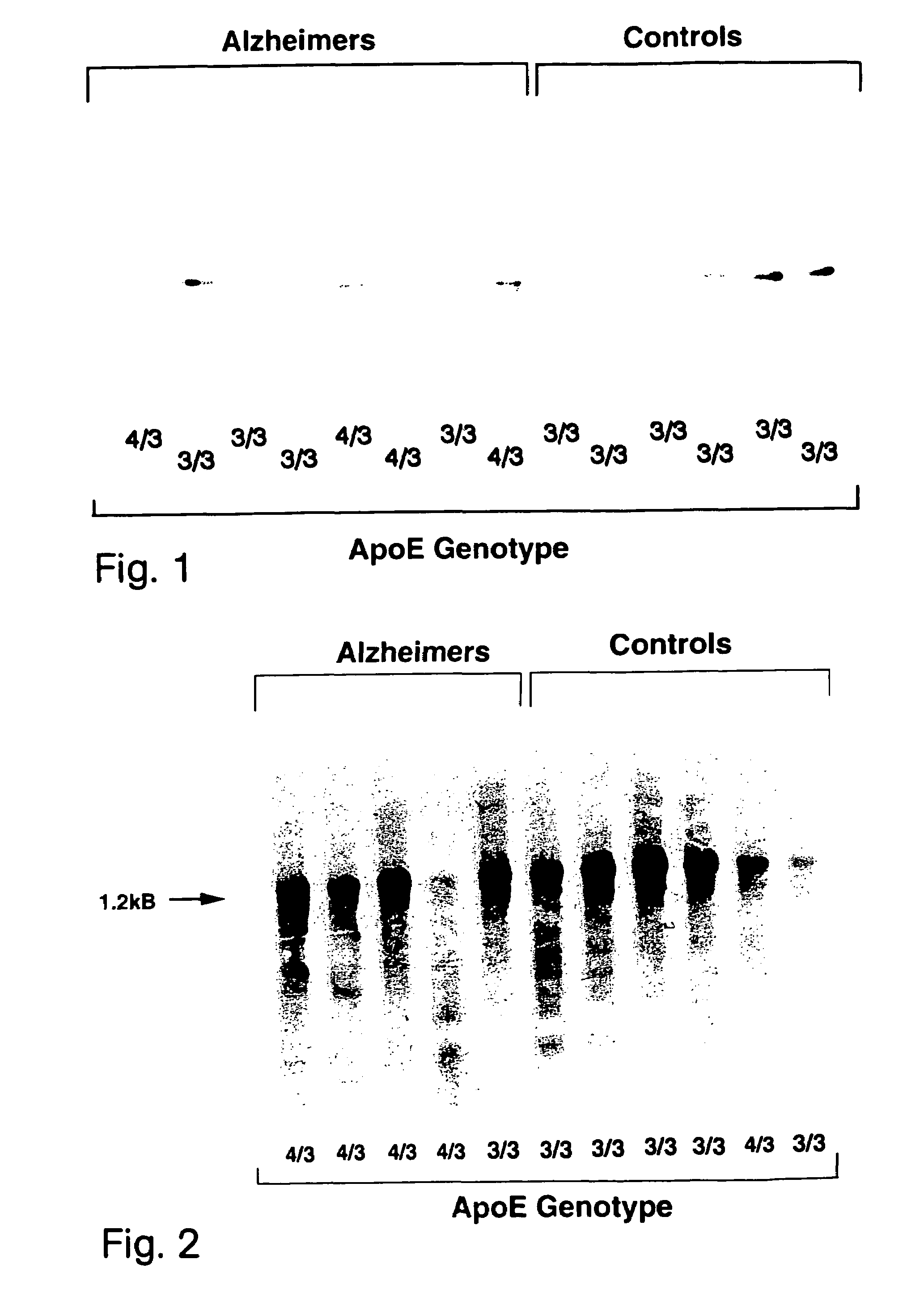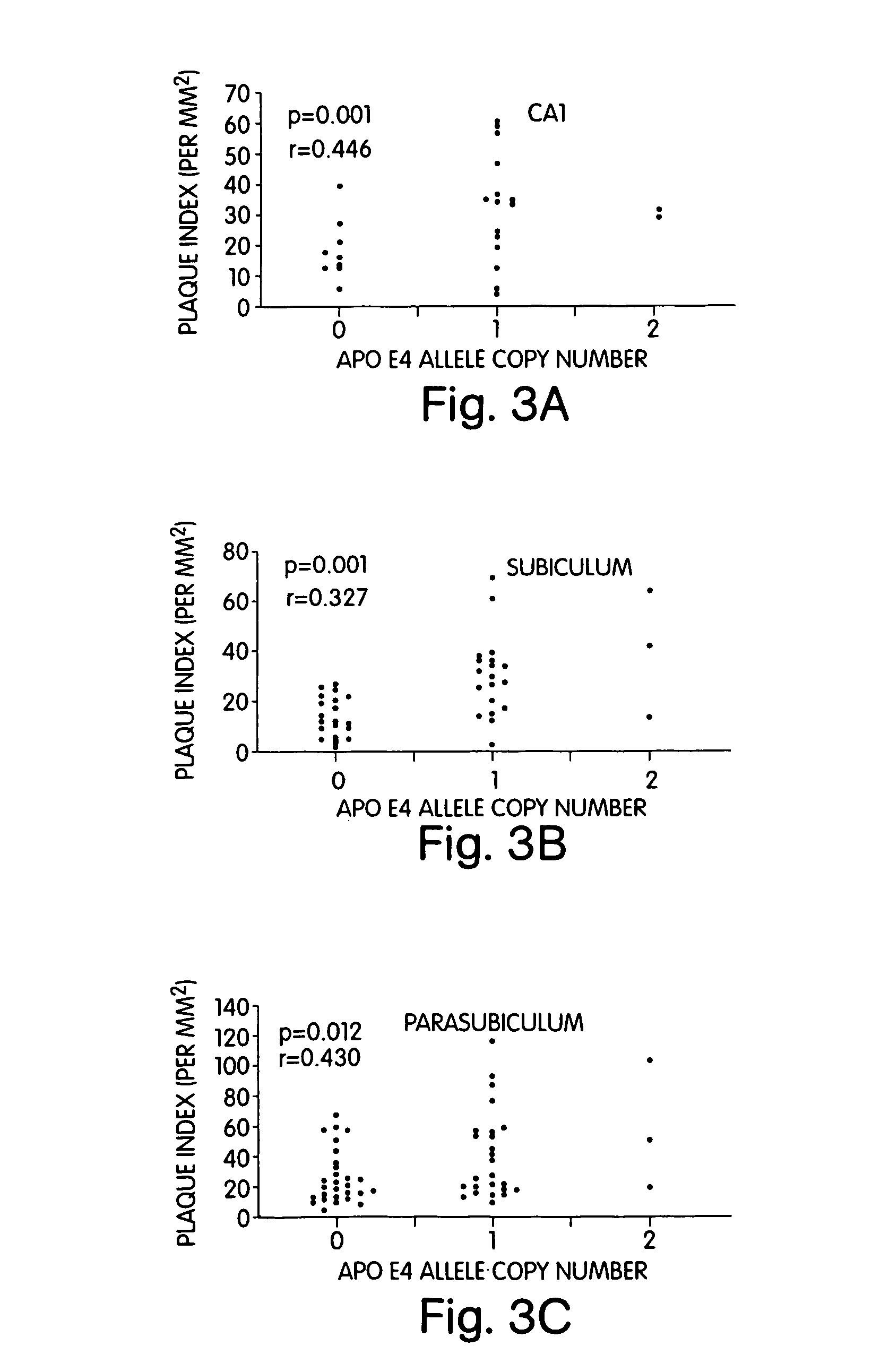Pharmacogenetic methods for use in the treatment of nervous system diseases
a technology for nervous system diseases and pharmacogenetic methods, applied in the field of neurological diseases, can solve the problems of ethical inconvenient treatment, physical inability of patients to participate in trials, etc., and achieve the effect of more rapid treatmen
- Summary
- Abstract
- Description
- Claims
- Application Information
AI Technical Summary
Benefits of technology
Problems solved by technology
Method used
Image
Examples
example i
Determination of apoE Levels and Allele Load.
[0047]FIGS. 1 and 2 illustrate Western and Northern blot analyzes of apoE levels in the hippocampus of non-AD and AD patients as a function of their respective genotype.
[0048]Frozen hippocampi from post-mortem patients were obtained from the Douglas Hospital Brain Bank in Montréal. Age and sex were matched and post-mortem delays were similar from the two groups (˜14 hrs). Post-mortem delays up until 24 hours have little impact on apoE stability (Lehtimaki T., 1991, Clin. Chim. Acta, 203:177–182) and it can be stored at −80° C. for several months without noticeable trace of degradation. Hippocampal total RNA was extracted and quantified by oligo(dT) hybridization as described previously (Poirier J. et al., 1991, Mol. Brain. Res., 11:97–106). Hybridization protocol of the full length apoE cRNA probe used in these experiment was described before (Poirier J. et al., 1991, Mol. Brain. Res., 9:191–195). High molecular weight DNA was isolated fr...
example ii
Correlations Between apoE4 Allele Copy Number and Senile Plagues and Neurofibrillary Tangles in Three Different Areas of the Hippocampus, Namely the CA 1 Sub-Field, Subiculum and the Parasubiculum in Individuals with Different apoE4 Allele Copy Number.
[0056]The results are summarized in FIG. 3 and below.
Methods
[0057]Genotype was determined as described for FIG. 1. Senile plaque and tangle density measures were performed as described before (Aubert I. et al., 1992, J. Neurochem., 58:529–541). Paraffin embedded hippocampal tissue from 59 autopsied AD patients was obtained from the Douglas Hospital Brain Bank and stained with hematoxylin and eosin, modified Bielchowsky, and alkaline Congo red. Quantitative morphometric evaluations of neurofibrillary tangles and senile plaques were done as follows. A micrometric scale was used for calibration. Readings were done with a 10× objective for plaques and 25× objective for tangles. Diffuse plaques were excluded from these measurements. Screeni...
example iii
Association Between Neurological Pathology and Acetylcholine Activity.
[0059]Brain phospholipids such as PC and PE which have been shown to play an important role in the availability of choline, the rate-limiting precursor of acetylcholine (Ach). Brain levels of choline are decreased by 40–50% in AD frontal and parietal cortex (Nitch R M et al., 1992, Proc. Natl. Acad. Sci., 89:1671–1675). Similarly, cholesterol is apparently required for the proper function of some cholinergic receptor sub-types (Jones O. T. & McNamee M. G., 1988, Biochemistry, 27:2364–2374). On the basis of possible interrelation ships between apoE4, senile plaque and neurofibrillary tangle counts and Ach, we evaluated the next possible association between the presence of apoE4 and cholinergic dysfunction, a classical hall mark of AD (Bowen D M et al., 1981, N. Engl. J. Med., 305:1016; Whitehouse P J et al., 1982, Science, 215:1237). We focused our attention on the determination of CHAT activity, the key enzyme inv...
PUM
| Property | Measurement | Unit |
|---|---|---|
| Fraction | aaaaa | aaaaa |
Abstract
Description
Claims
Application Information
 Login to View More
Login to View More - R&D
- Intellectual Property
- Life Sciences
- Materials
- Tech Scout
- Unparalleled Data Quality
- Higher Quality Content
- 60% Fewer Hallucinations
Browse by: Latest US Patents, China's latest patents, Technical Efficacy Thesaurus, Application Domain, Technology Topic, Popular Technical Reports.
© 2025 PatSnap. All rights reserved.Legal|Privacy policy|Modern Slavery Act Transparency Statement|Sitemap|About US| Contact US: help@patsnap.com



